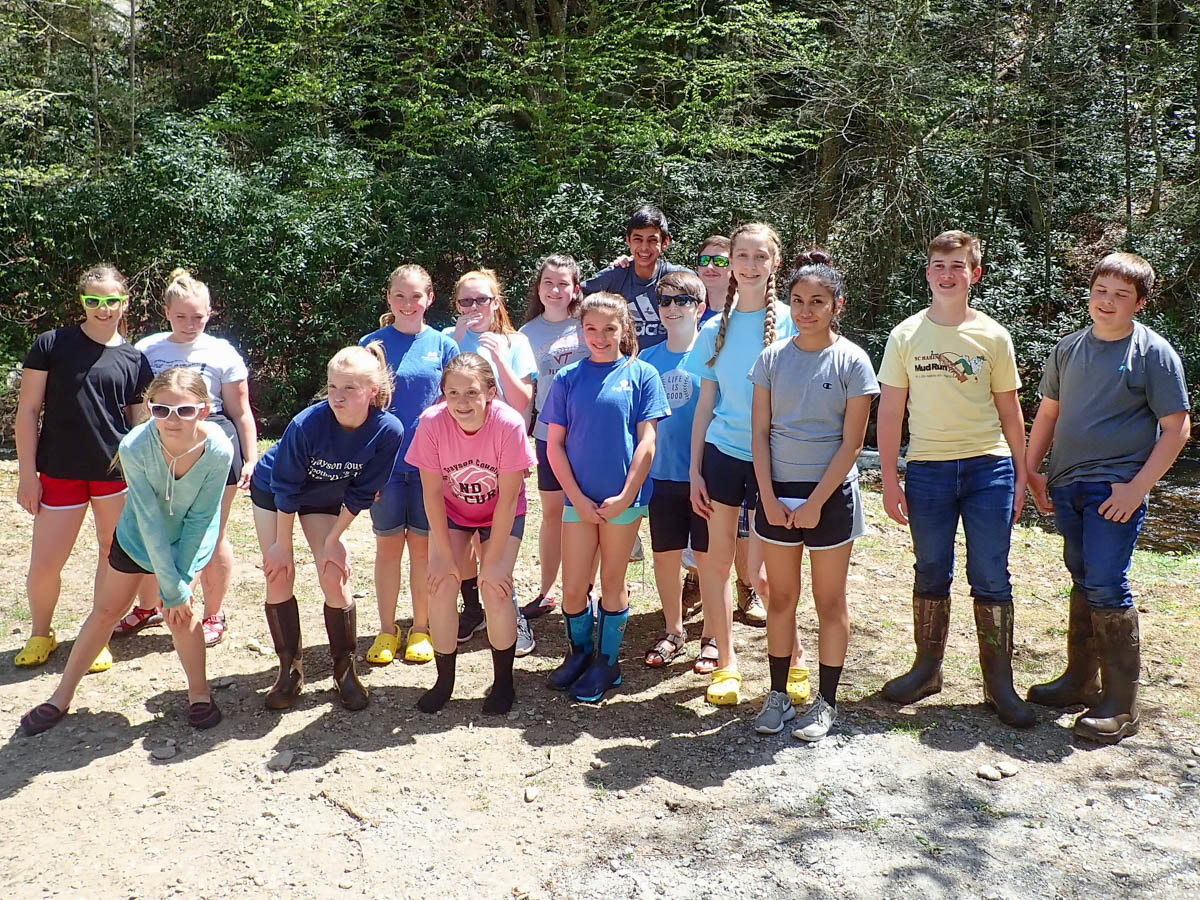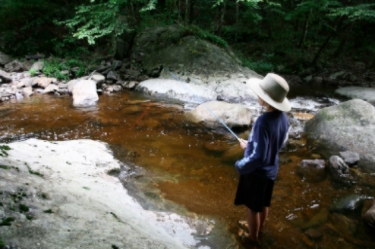

Trout in the Classroom
Release day is a big deal for students as they set free nearly 100 tiny brook trout after watching and caring for them over the span of an entire school year

School of Fish
As the school year wraps up, the student's hard work as part of the Trout in the Classroom program is paying off.
Having reared brook trout fingerlings from eggs for the last 4 months, the students now feel the pride of releasing the young trout into local streams.

Impromtu Fly Fishing Camp!
At the request of a couple of campers from a previous camp we put together another Fly Fishing Camp to end the summer. Shortened by a day, it became an action packed three day initiation by fire. On the ride to camp we all agreed to treat this as an intensive course rather than the typical shenanigans of a summer camp. The result was one seriously focused group of kids.

Fishbugs and Snorkeling with the Scout Troop #5
A small pack from Boy Scout Troop #5 hauled their swimming trunks, snorkels and bug nets down to Big Wilson Creek in search of Southern Appalachain Brook Trout. Upon arriving we found a tea-colored tannin stained creek. Not to be deterred, the scouts geared up and entered the 62 degree water without hesitation.

Trout in the Classroom
In 2014 we received generous support from Grayson National Bank to expand the participation in Trout Unlimited's Trout in the Classroom program. Their support allowed us to install two more tanks: one in Mrs. Murphy's 4th grade class at Piney Creek Elementary and one at Mr. Horton's Galax High School Ag class, for a total of three 50 gallon tanks including the one managed by Mrs. Perry's 7th grade class at Grayson Highlands.

Galax Elementary Enrichment: Fly Fishing
During the week of February 9th, BRDC participated in the Galax Elementary Enrichment Week. This is a fantastic offering by the Galax Public School System where students get to take in-depth courses on particular subjects. One of the programs we offered was all about fly fishing. 32 enthusiastic second and fourth graders signed up for our five day, 15-hour fly fishing course.

Trout in the Classroom: Grayson Highlands School
Over the past four months Mrs. Perry’s seventh grade life science students at Grayson Highlands School have been diligently raising native brook trout in their school lobby for all visitors to see. This is part of a program called “Trout in the Classroom” and revolves around the students learning about the biology and ecology of one of the most iconic species of the Blue Ridge Mountains.